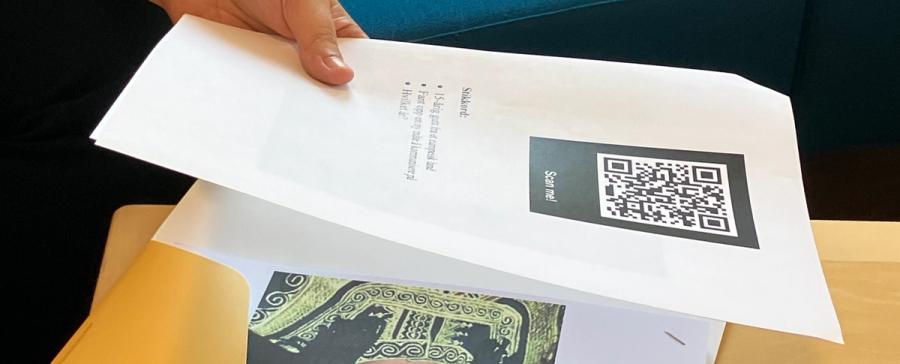Timeline: The rights of people with disability
It took a long time before people with disability had their own human rights convention. In this group work the participants will explore historical events, people and milestones that have contributed to the current situation.
Quick facts




Activity goals
- To learn about how the protection of human rights for people with disability has developed.
- To understand that while human rights are the responsibility of the states, organisations and individuals also play important roles in realising them.

Instructions
Preparations
- Print out the cards for the timeline. These cards have three types of information: On the front page: Picture. On the second page: QR codes for access to audio or YouTube clips (which can be read by a mobile phone) and some keywords. You can add or remove cards so the timeline is appropriate for the context of the participants.
- Here you can download a pdf file with the cards. The cards can also be distributed digitally.
- Prepare the room for group work. Mark timelines with tape in the middle of each table or on the floor. The line starts from the 1800s and goes to the present. Alternatively the participants can create a digital document where they place the cards in order.
Group work (20-30 minutes)
- The facilitator divides the participants into groups of 4 or 5. Each group receives 10 cards. Alternatively the groups can have five cards each.
- If preferred, the groups can have a coordinator who is responsible for scanning the QR codes, reading keywords out loud, explaining the picture and placing the pictures in the agreed order. Some of the audio files are long but it is not necessary to play the whole file.
- The groups are given the following cards: Discuss the cards in front of you and put them into chronological order from 1800 to 2030 (the future). You can preferably connect the topic on the card to one or more human rights. The groups do not need to enter exact years, the purpose is to reflect on the topic and the historical order.
- When the groups have finished, the facilitator should go around the room and acknowledge each group’s work. If there are many participants, the facilitator should proceed straight to the review of the group work and start the discussion of the timeline in the plenary session. NOTE: This is not a competition about getting the most cards in the “right” place.
- The participants discuss the following questions:
- What topic does the card refer to?
- Approximately where on a timeline from 1800 to 2030 can the card be placed?
Summary (20 minutes)
- The facilitator reviews the cards in chronological order and presents the topics. Here is a description of the cards (link)
Reflection
- Who is responsible for protecting human rights?
- What are the most important advancements in the rights of people with disability?
Debriefing
Development of the rights of people with disability has gradually taken a positive turn. Individuals, organisations and international agreements have been important catalysts for this development.
This long-term perspective is important for understanding the situation today in a larger context. Even if change takes time, results are eventually seen. We must continue to work on realising human rights for all as challenges and barriers remain on both the national and international levels. In developing countries, for example, only 10 per cent of children with disability attend school.



